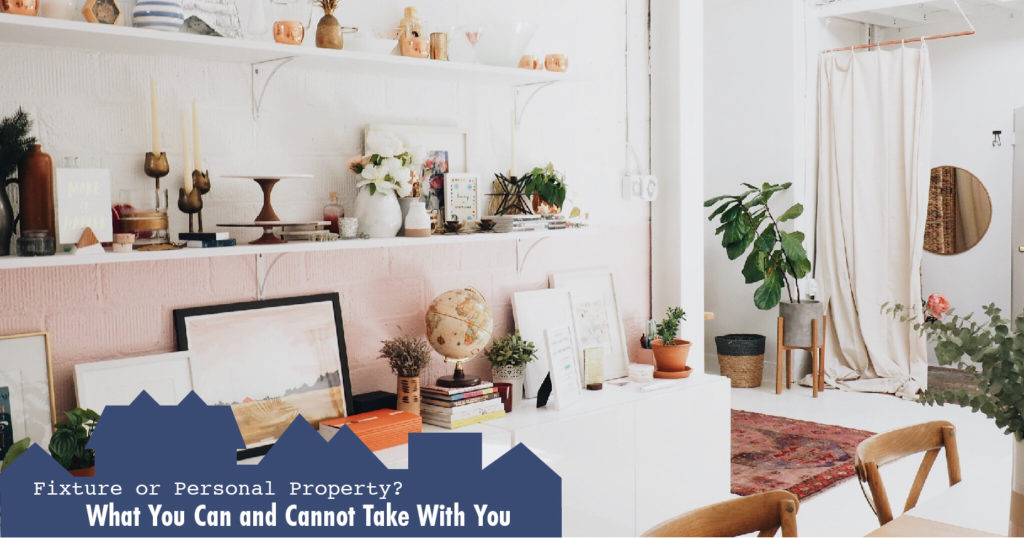
You may love the gorgeous grand chandelier hanging in the middle of your old dining room, but the wisest course of action would be to leave it behind. Don’t tank or derail a sale by confusing personal property with items that stay with the house, even if those items were custom built. Here are some simple rules to follow to help you decide whether or not an item is a fixture or personal property.
Is it fixed to the property? Leave it.
Follow the general rule of thumb if you’re wondering what household items you can take: don’t detach anything bolted down, screwed in, or built into the house and claim it as personal property. If you don’t want a fixture included in the sale, detach it before listing the house. By doing this, you avoid confusion and potential illegalities for when the new owner first moves in—only to discover that chandelier they saw during the house showing is missing.
Of course, you should probably replace the removed fixture with something else, if only so that potential buyers don’t find a gaping hole with loose wires in the ceiling when you show the house.
You may decide after the listing that you want to take a fixture, but that’s something you’ll need to state up front. Being transparent leaves less room for lawsuits, and yes, changing anything built into the property after an offer is made is illegal. Unfortunately, declaring that a fixture is coming with you when you move may become a point of contention between you and the buyer, especially if the buyer was looking for to the inclusion of that fixture.
Be careful with potential grey areas.
The flat screen television mounted to the wall is considered personal property, but what about the mounts? If you’re not including the TV in the sale, you can probably take the mounts with you. Specifically referencing it in the sale will leave less confusion, however. Again, transparency when it comes to the difference between a fixture and personal property is important.
Another grey area are window air-conditioning units. Since these units usually aren’t bolted down, you can take that with you, if you want. However, if you had to cut a hole in the wall to make the unit fit, you should leave it. When you come up to a grey area like this, consider whether or not the fixture modifies the surrounding property. If the fixture had to modify walls, ceilings, floors, etc., leave it.
Don’t bother with your garden. Anything that is part of the landscaping stays—with exception.
Understandably, some fixtures—including portions of the landscape, like flowers—have sentimental value. A specific request to take a plant or some other fixture, like a stain-glass window gifted to you for an anniversary, may permit you to take the item. These instances would go down with the negotiation process, so just communicate with your agent or buyer.
Yes, light bulbs stay. So do window treatments.
Leaving the lightbulbs behind is mostly a matter of not being petty, but either way, you should leave them where they are. Lightbulbs, after all, are screwed in—meaning they’re fixed to the house. The same goes for curtain rods (though you can take the curtains) and blinds, no matter how fancy. Bolted down mirrors stay, too, but a free-hanging mirror—similar to a picture frame—you can take.
One way to keep a sale going smoothly is to know what you can and cannot take with you after the fact. The buyer expects to receive the house in a certain way, so discovering that built-ins they saw during the house tour are now gone can cause aggravation and come back to you. If you cannot tell whether something is a fixture or personal property, just default to this general rule: is it bolted, screwed in, or built in? Leave it. If all else fails, consult with your Realtor.
For more tips on house selling and buying, continue following the Ryan Roberts Realtor blog! For all of your real estate needs in the Auburn, Opelika, and Lake Martin area, call Ryan Roberts at 334-750-9872 or email [email protected]!

